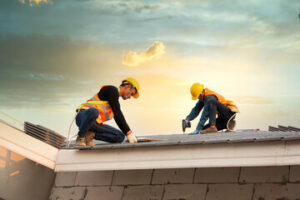Having the right people in your business is essential to your success. But nurturing your talent is more than recruiting and hiring – it’s about managing the overall talent management process to ensure that your organization is future proofed.

Talent management consulting offers science-backed methodologies and tools that help align teams with overarching business goals. Click Here to find out more details.
Talent management isn’t just about finding the right people to fill key positions; it also involves developing those employees and making sure they are happy at their jobs. This includes offering them opportunities to learn new skills, helping them develop a career plan and giving them the flexibility to move around within the organization as needed.
Talent managers can help organizations with workforce planning, identifying future skill gaps and looking at where internal candidates could step in to fill those roles. They can also create a system of performance feedback and support, which will help to ensure that employees are on track to meet business goals. They can also help to design and implement learning programs that will give employees the opportunity to develop new skills, both in-house and externally, which will help them to stay ahead of the curve in their field.
When it comes to selecting a consultancy firm, look for a company with a track record of success and a good reputation. It should have a clear understanding of your business needs and be able to provide measurable results. It should also be able to offer a cost-effective solution that will fit your budget.
Talent management consultants can also help to create programs that will make it easier for employees to leave the organization when they feel their careers are not progressing as expected. This can include redeployment programs, which will allow them to gain valuable experience in other areas of the company, or alumni initiatives that will give them access to other employers and industry leaders. By creating these types of programs, companies can ensure that they are always able to get the best possible return on their investment in talent.
Developing the Right Skills
An effective Talent Management Consultancy can help businesses develop their employees. This includes developing learning and development programs to help individuals progress in their careers, as well as identifying high-potential employees and providing them with training to prepare them for future leadership roles. It also helps companies develop a talent pipeline so they can quickly replace critical positions, minimizing disruption to business operations and ensuring continuity.
It is important to choose a firm with the right expertise and experience. Look for a track record of success and client testimonials, as well as an ability to offer data-driven insights and measurable results. A solid firm will also be able to match their services to your organizational needs and budget.
Some firms provide comprehensive solutions that address all aspects of talent management, including recruiting, employee engagement, performance appraisals, and more. Others specialize in specific industries or talent management initiatives, such as developing leadership pipelines, delivering assessment and training interventions, or improving succession planning.
The key to succeeding in today’s rapidly changing business environment is people. Look after your people and they will thrive, propelling your business from strength to strength. Neglect them, however, and you risk a mass exodus of disgruntled staff and a tarnished employer brand.
Talent management consulting firms can provide the support you need to build a strong, motivated workforce that will deliver on your business goals now and in the future. By implementing best practice strategies and supporting your business goals, they can ensure that your workforce is equipped with the skills to achieve success.
Managing Performance
As business needs evolve, a talent management consultancy can provide ongoing support to ensure that organizational capabilities keep pace. This includes assessing and measuring employee performance, providing coaching and training to help employees reach their potential, and developing talent pools that will provide future flexibility. It also involves managing succession planning, aligning people strategies with business goals, and addressing changes in the workplace.
The right talent management consultant can make a big difference in the success of your organization. They should have a track record of delivering quality results and be willing to work with you in a way that’s mutually beneficial. It’s also important that they understand your organization’s culture and philosophy, and that they can offer a solution that will be a good fit.
A talent management consultancy can help businesses prepare for the future by creating and implementing strategic talent acquisition plans. They can also assess the current state of an organization’s leadership pipeline and implement effective talent development programs to build up the skills of their leaders.
Ultimately, the goal of a talent management consulting firm is to transform HR into a business partner by putting the spotlight on people. They can do this by establishing a talent-first mindset, helping organizations develop the skills they need to meet today’s challenges and grow into tomorrow’s opportunities.
The new world of work means that it’s harder than ever to keep top performers happy and engaged. A good talent management consultancy can make sure that your organization is doing everything it can to attract and retain talented employees, which can help to reduce the cost of turnover and improve productivity. Pearl Lemon consultants will review your existing strategies (assuming you have any) for retaining talent and determine whether they’re doing enough to future proof your business.
Managing Change
If your team members have the skills to work together effectively, it will be much easier for them to meet organizational goals and achieve success. That’s why it’s important to have a well-defined talent management strategy that includes recruitment, training and development, performance evaluations, succession planning, and retention initiatives. A talented management consultant can help you develop these strategies and ensure they are aligned with your business objectives.
Businesses that rely on high-skilled workers, like technology firms and healthcare organizations, may benefit the most from talent management consulting. These industries require specialized knowledge and expertise, so it’s crucial to have a process in place for identifying and developing talent that can grow with the organization. A talent management consultancy can help you set up these processes, including implementing performance evaluation systems and fostering continuous learning opportunities.
Employees are more likely to stay at a company when they feel they have a career path and the ability to advance within the organization. Talent management consultants can help you develop these frameworks, and establish mentoring programs, job rotations, and training initiatives that will empower employees to take on new challenges and improve their skills.
Keeping your workforce happy and engaged is key to long-term business success. In addition to the benefits of attracting and retaining top talent, a talent management consultancy can also help you create positive workplace culture and support employee wellness initiatives. A firm that focuses on talent management will be able to assess your current culture, and recommend ways to enhance engagement, communication, and collaboration.
Retaining Talent
Keeping talented employees on board is vital for the long-term success of any organization. Talent management consultants can help with retention strategies by identifying the factors that motivate and drive employee satisfaction and engagement, and then creating programs that align with those drivers. This may include developing career pathways within the organization, providing ongoing development opportunities, and fostering a culture of growth and learning.
When you have a solid talent management strategy in place, it can save you money in the long run. It’s estimated that it costs between half and double an employee’s salary to replace them, which can be very costly. Talent management also frees up time for leaders to focus on other organizational goals, like expanding programming or rolling out new products.
Another way to improve retention is by increasing the amount of mentoring and reverse mentoring in the organisation. This helps to expose people to different perspectives and skills, which can be a great way to increase job satisfaction. Lastly, it’s important to provide competitive compensation and benefits packages that are attractive to your employees.
A talent management consultant can also help with the succession planning process, identifying potential future business leaders and ensuring that they have the necessary development opportunities. This can be done by conducting regular one-on-one engagement conversations where an individual’s professional aspirations and motivations can be identified and then aligned to their role and the business needs.


